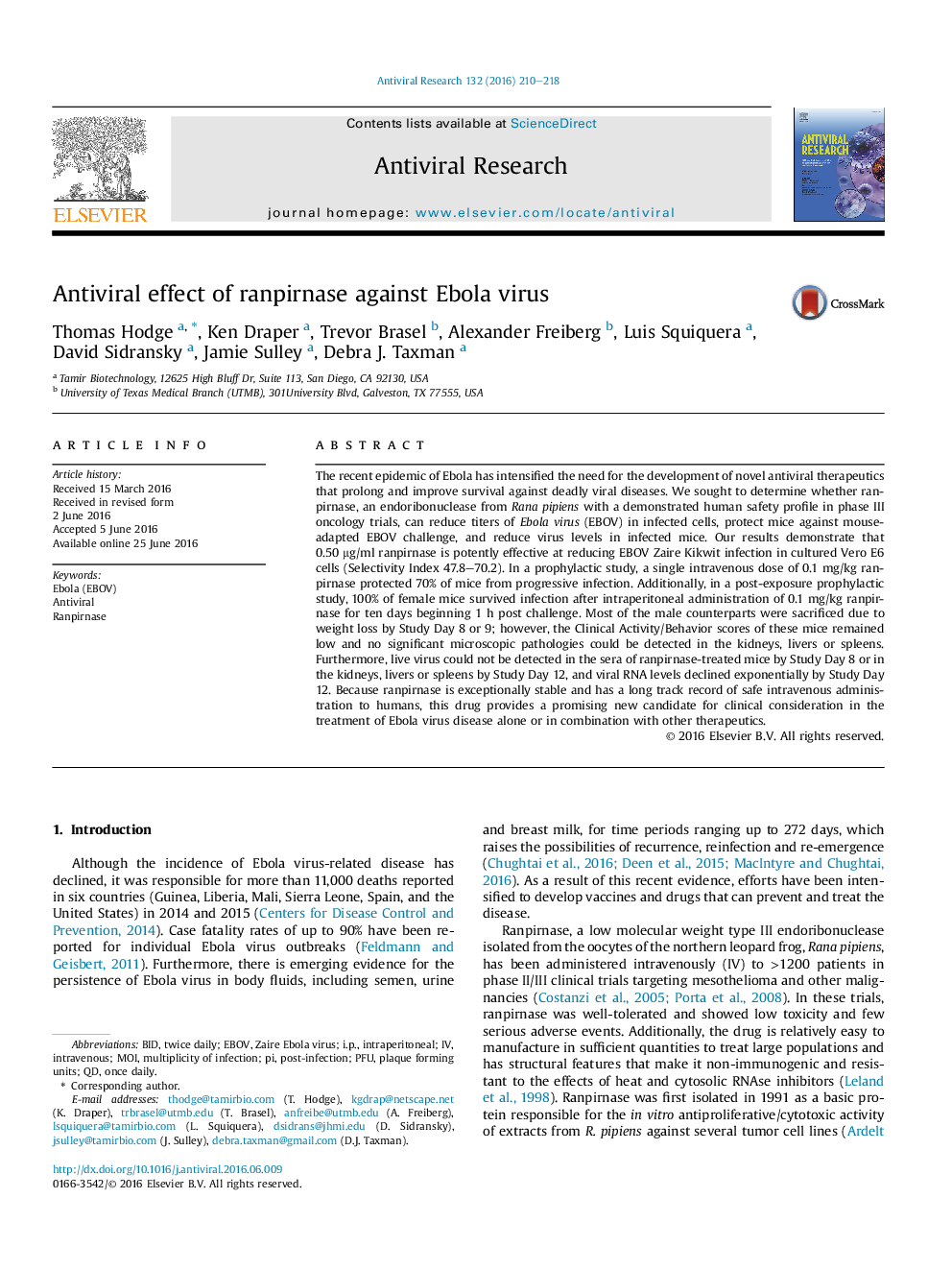| کد مقاله | کد نشریه | سال انتشار | مقاله انگلیسی | نسخه تمام متن |
|---|---|---|---|---|
| 5821630 | 1557811 | 2016 | 9 صفحه PDF | دانلود رایگان |

- Ranpirnase is an RNAse from Rana pipiens with a proven safety profile in phase III oncology trials.
- We show that ranpirnase eliminates Ebola virus (EBOV) in cultures of Vero E6 cells, with selectivity indexes of 47.8-70.2
- Ranpirnase was protective against EBOV in most mice when administered prophylactically or post-exposure prophylactically.
- Mice that survived EBOV after ranpirnase treatment regained lost weight and had exponentially reduced viral loads.
- These findings suggest that ranpirnase is a suitable candidate for non-human primate studies.
The recent epidemic of Ebola has intensified the need for the development of novel antiviral therapeutics that prolong and improve survival against deadly viral diseases. We sought to determine whether ranpirnase, an endoribonuclease from Rana pipiens with a demonstrated human safety profile in phase III oncology trials, can reduce titers of Ebola virus (EBOV) in infected cells, protect mice against mouse-adapted EBOV challenge, and reduce virus levels in infected mice. Our results demonstrate that 0.50 μg/ml ranpirnase is potently effective at reducing EBOV Zaire Kikwit infection in cultured Vero E6 cells (Selectivity Index 47.8-70.2). In a prophylactic study, a single intravenous dose of 0.1 mg/kg ranpirnase protected 70% of mice from progressive infection. Additionally, in a post-exposure prophylactic study, 100% of female mice survived infection after intraperitoneal administration of 0.1 mg/kg ranpirnase for ten days beginning 1 h post challenge. Most of the male counterparts were sacrificed due to weight loss by Study Day 8 or 9; however, the Clinical Activity/Behavior scores of these mice remained low and no significant microscopic pathologies could be detected in the kidneys, livers or spleens. Furthermore, live virus could not be detected in the sera of ranpirnase-treated mice by Study Day 8 or in the kidneys, livers or spleens by Study Day 12, and viral RNA levels declined exponentially by Study Day 12. Because ranpirnase is exceptionally stable and has a long track record of safe intravenous administration to humans, this drug provides a promising new candidate for clinical consideration in the treatment of Ebola virus disease alone or in combination with other therapeutics.
Journal: Antiviral Research - Volume 132, August 2016, Pages 210-218